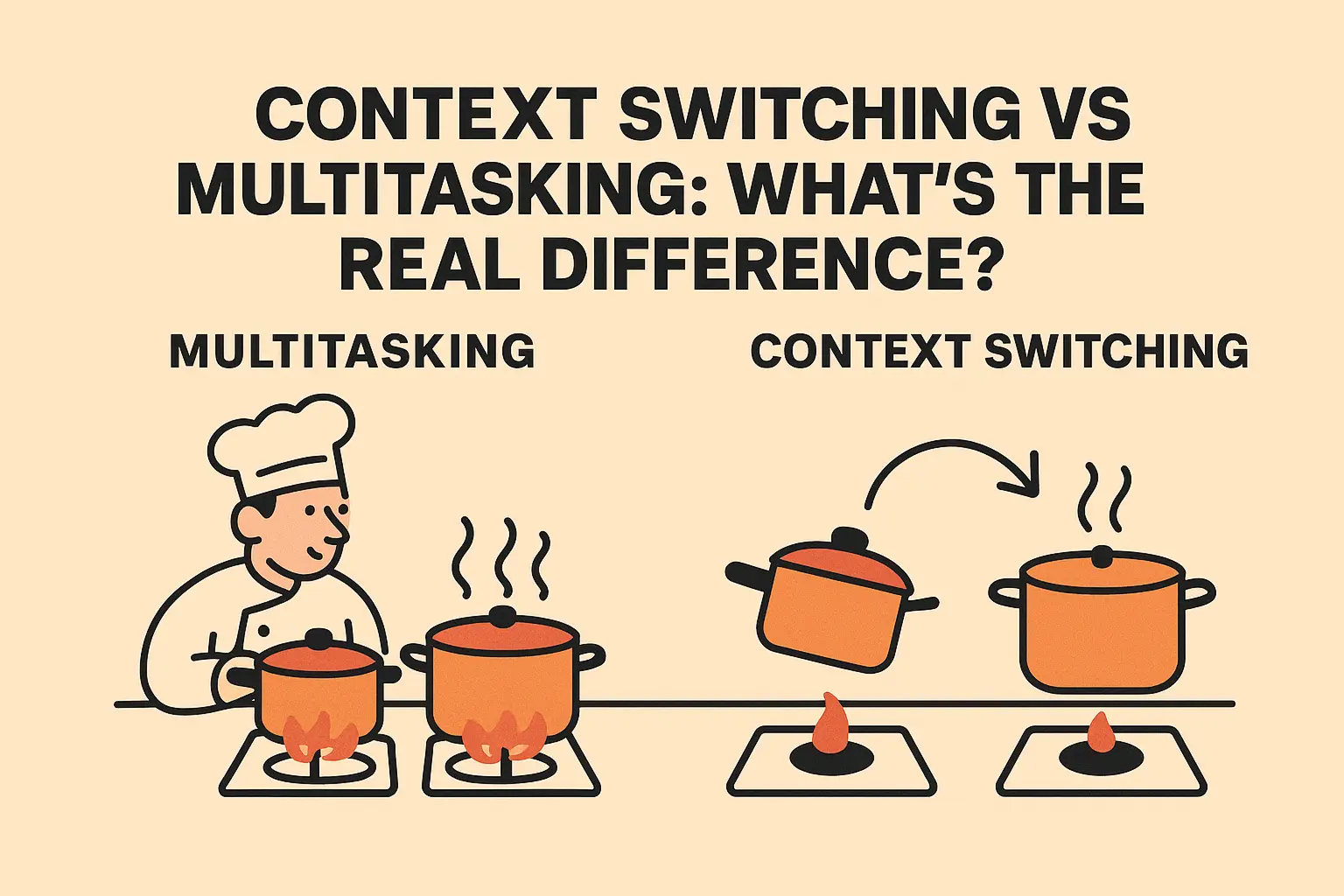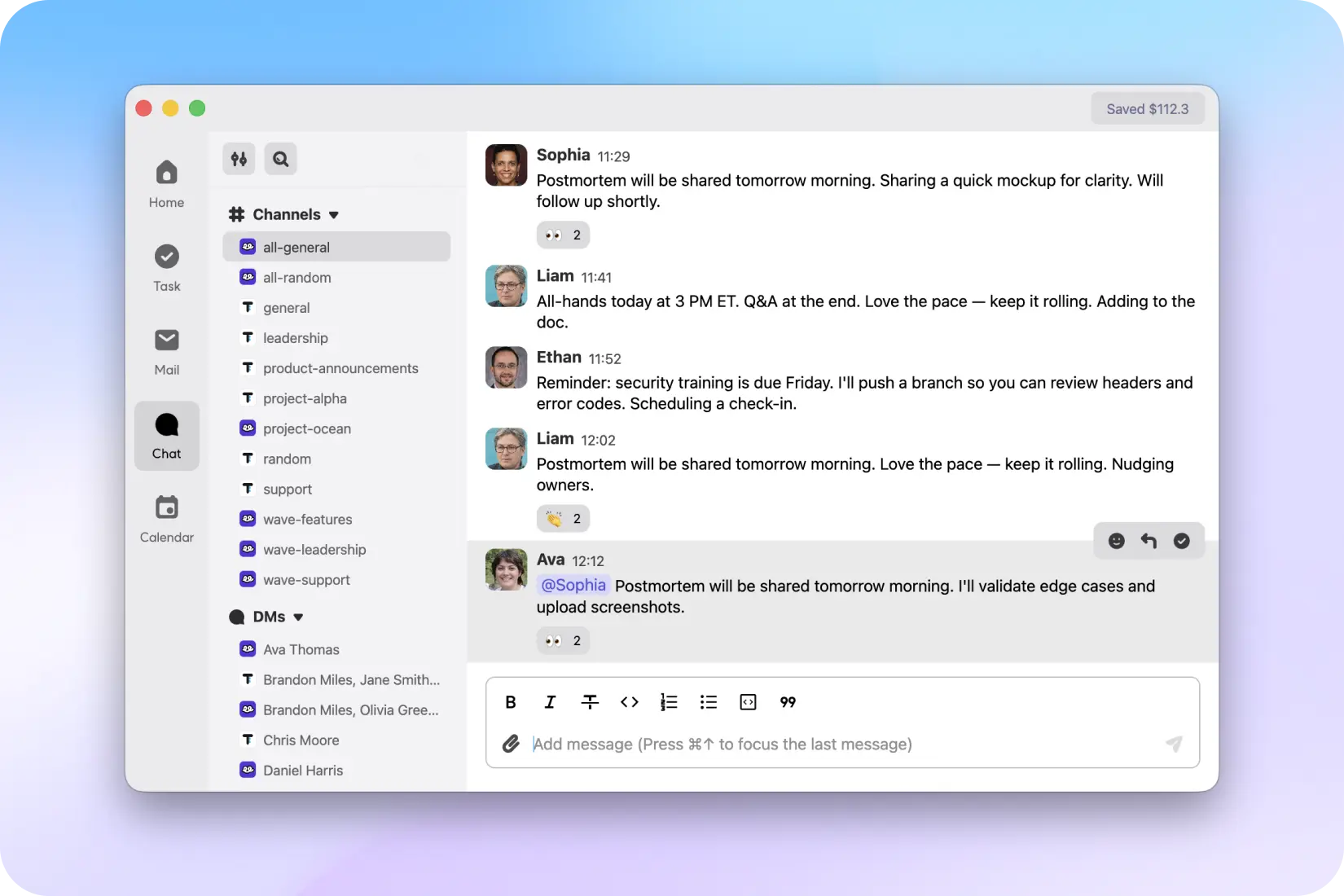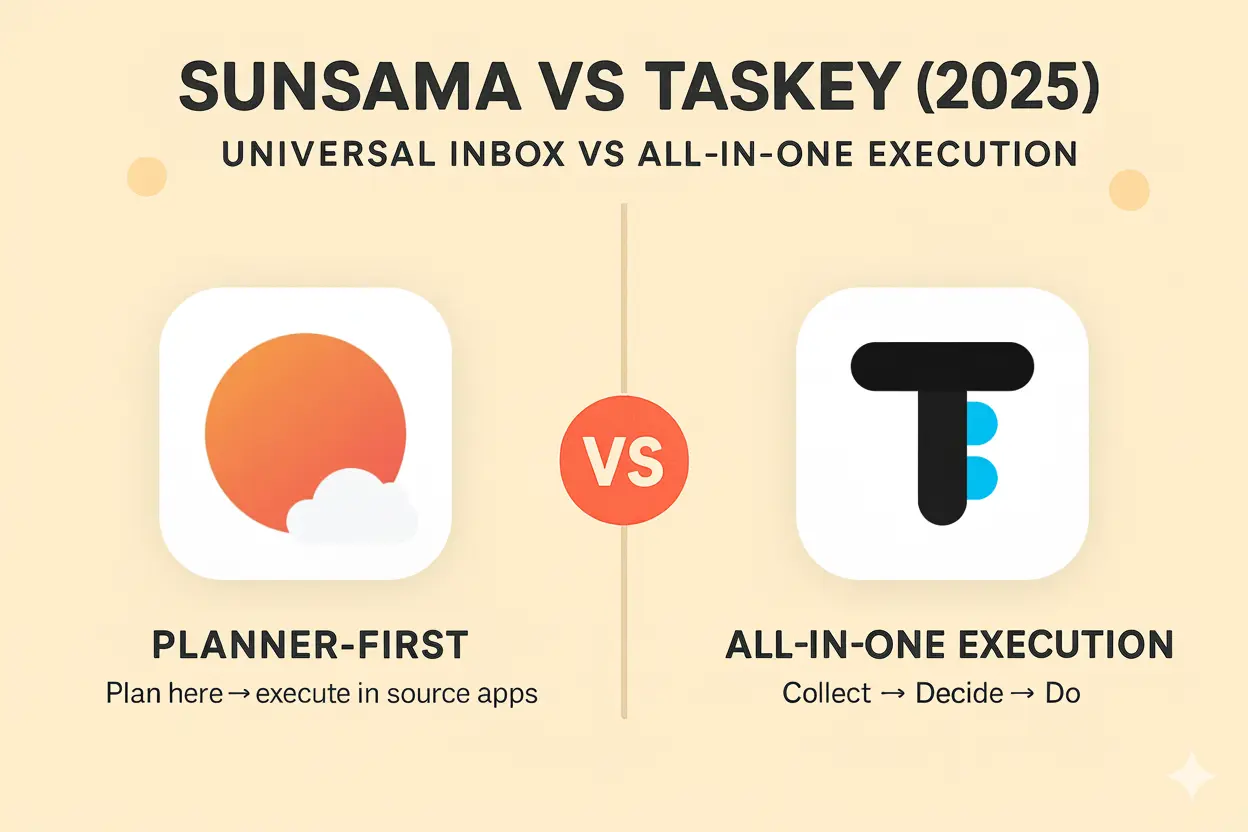
Many people use the two terms as if they are the same. They are not. Multitasking is attempting to handle tasks at the same time. Context switching is the mental cost you pay when you move from one task or tool to another. The losses add up quickly: on-screen attention now averages about 47 seconds before people switch, and knowledge workers check email roughly 77 times a day. Those patterns fragment focus and leave less time for work that actually moves the needle.
This article explains the difference, why the two get confused, when each is acceptable, and how to design a day that protects focus. You will also see how to run a single-flow system in Taskey so communication and execution happen in one place.
What each one actually means
Multitasking is concurrent handling of work. Think of a chef trying to keep several pots boiling at once. You can watch them all, but true depth is rare.
Context switching is what happens when you leave one mental model and load another. It is like lifting one pot off the burner and putting another on—each swap leaks heat. In knowledge work that “heat” is momentum: every switch creates resumption lag as you rebuild the original task in your head.
Why the two get confused
Both can feel productive because there is constant motion. Our brains are tempted to treat activity as progress, a cognitive trap often called a productivity illusion—and many organizations reinforce it by conflating activity with achievement. The fix is to judge work by results, not by the number of pings, meetings, or windows touched.
When multitasking is acceptable
- Lightweight, well-practiced tasks that do not need deep concentration
- Background processes that do not compete for the same cognitive resources
- Short, mechanical steps during waits such as builds or file uploads
If the work demands design, debugging, strategy, or writing, multitasking will lower quality. In those cases reduce switches and work in blocks.
How to design a day that protects focus
Set clear blocks for deep work. Reserve one or two 60 to 90 minute windows. Treat them as appointments with yourself.
Batch shallow work. Handle email, Slack, and admin in short windows. Do not let them bleed into your best hours.
Create one capture point. Collect incoming messages in a single inbox. Decide what matters, turn it into the next step, and move on.
Limit tool hopping. Keep communication, planning, and execution in the same space whenever possible.
Write the next action. When you stop, note exactly where to resume. This reduces ramp-up when you return.
Taskey Play: turn messages into a single-flow system
1) Start in the unified inbox
Bring Gmail, Outlook, and Slack into Taskey. New mail and messages arrive in one place. Use prioritization to see what matters, then move the important items forward.

2) Convert messages into tasks
When something requires work, turn the thread into a task and keep the original conversation attached. Context stays with the work and you avoid copy and paste.

3) Plan where you execute
Pick today’s priorities and place them on your calendar inside Taskey. Planning lives next to communication so you are less likely to switch tools.
4) Batch replies without leaving your workspace
Reply to email, follow up on Slack, and update tasks in the same view. Run two short communication windows per day so messages do not break your focus blocks. See how to turn any email or Slack message into a task instantly and how inbox prioritization brings back your focus.

5) Review briefly, adjust quickly
At the end of the day, check that each important thread has a next step and that tomorrow’s top task is on the calendar. If you feel app fatigue, read Escape App Fatigue and simplify your stack.
Final thoughts
Multitasking and context switching are not the same. One is about doing things at the same time, the other is about the cost of moving between them. The more your work requires depth, the more you should reduce switches and keep a single flow.
Taskey helps you do that by unifying your inbox, tasks, and calendar. Start by bringing your email and Slack into Taskey, convert three messages into tasks, and block one focus session today. Protect your best hours and ship the work that matters.



